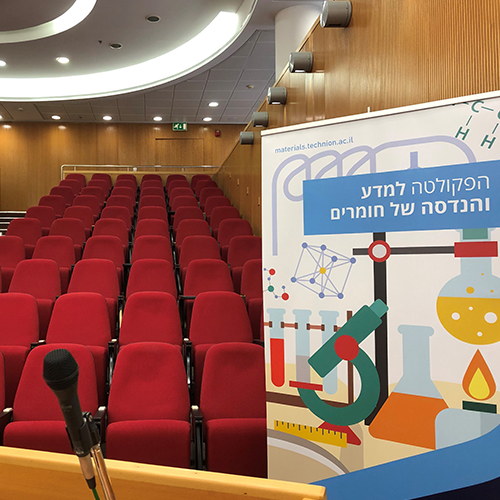
14/07/2025
Zoom link: https://technion.zoom.us/j/92220652416
MSc candidate: Xinnian Wu
Department of Materials Science and Engineering, Technion – Israel Institute of Technology
Department of Materials Science and Engineering, Guangdong Technion- Israel Institute of Technology
α-Al2O3 (alumina) is one of the most studied ceramic materials and has served as a paradigm for the study of grain growth. The mechanical and functional properties of polycrystalline Al2O3 strongly depend on the grain size, which is controlled by grain growth during powder densification in the sintering process. The extent of grain growth is directly related to grain boundary (GB) velocity, which depends on GB energy and GB mobility. Therefore, GB mobility is one of the key parameters that dominate the properties of polycrystalline materials. It has been widely reported that dopants and/or impurities can significantly change the GB mobility. The segregated solutes at the GBs can induce solute drag or solute acceleration. For example, the addition of MgO significantly decreases the mean GB mobility at 1600°C of Al2O3 due to solute drag, while trace amounts of CaO adsorb to GBs and accelerate the GB mobility at 1600°C, apparently by increasing the oxygen vacancy concentration in the vicinity of the GBs.
In this project, the influence of Fe as a solute on the GB mobility of Al2O3 was studied. Alumina was doped with Fe at concentrations below its solubility limit in Al2O3 at 1600 °C. The actual concentration of Fe after sintering was measured by scanning electron microscopy – wavelength dispersive X-ray spectroscopy (SEM-WDS). After annealing at 1600°C in air for different durations, the grain size and the effective GB mobility of Al2O3 with different Fe content levels were derived. Moreover, the combined effects of Fe and Mg on Al2O3 GB mobility were also studied. The chemical states of Fe were characterized by X-ray photoelectron spectroscopy (XPS) and the influence of different valence states (Fe3+ and Fe2+) on microstructure evolution was analyzed. The possible mechanism(s) by which Fe affects GB mobility in Al2O3 will be discussed.


